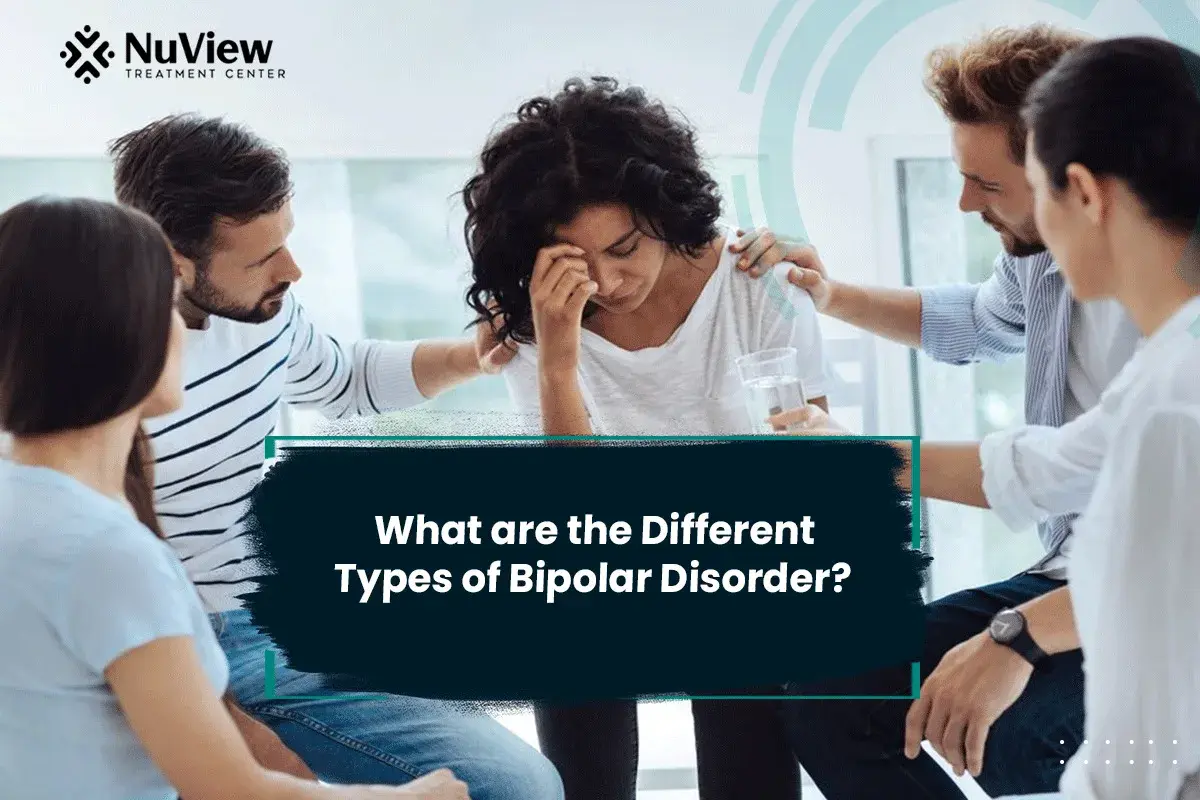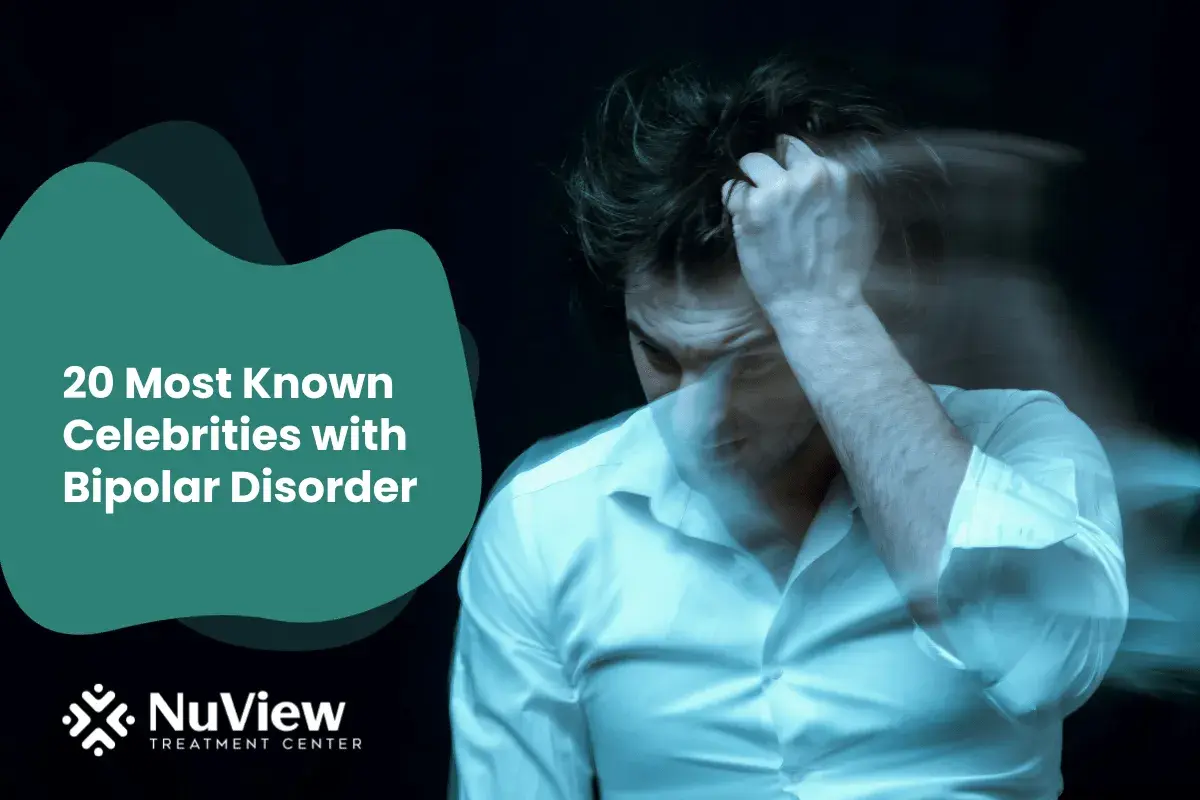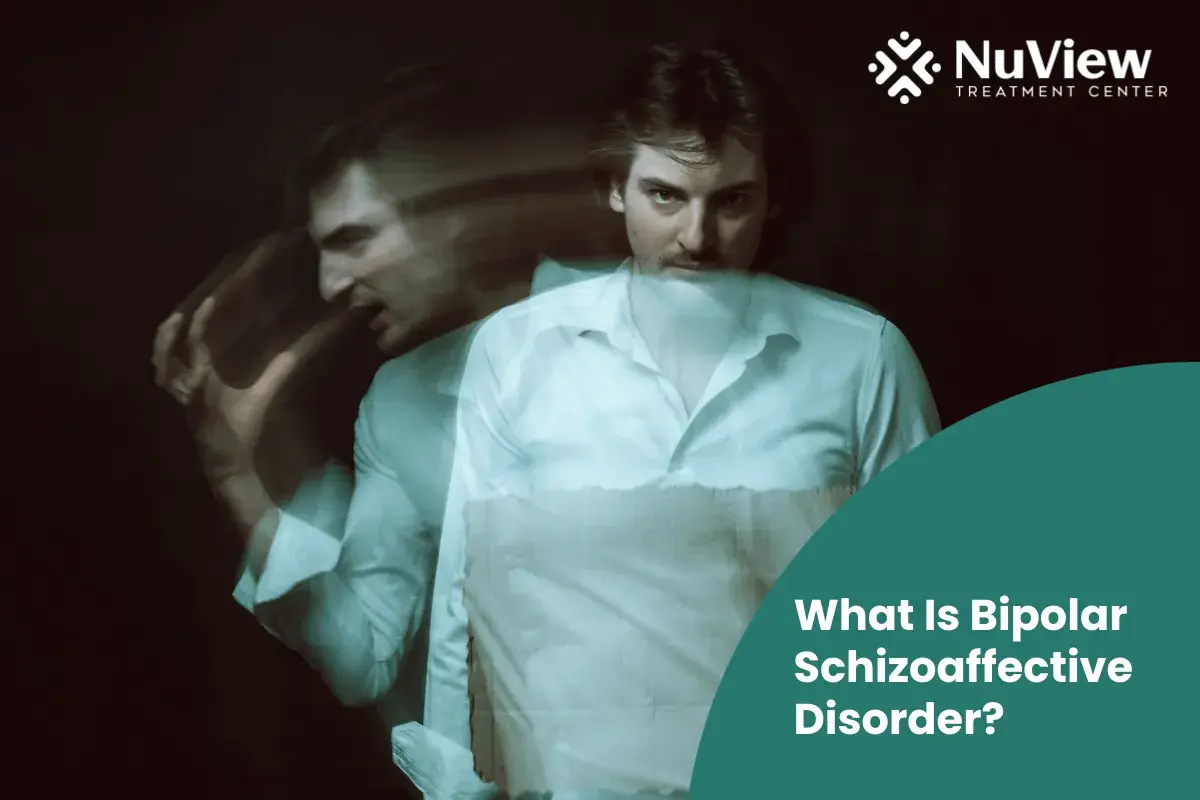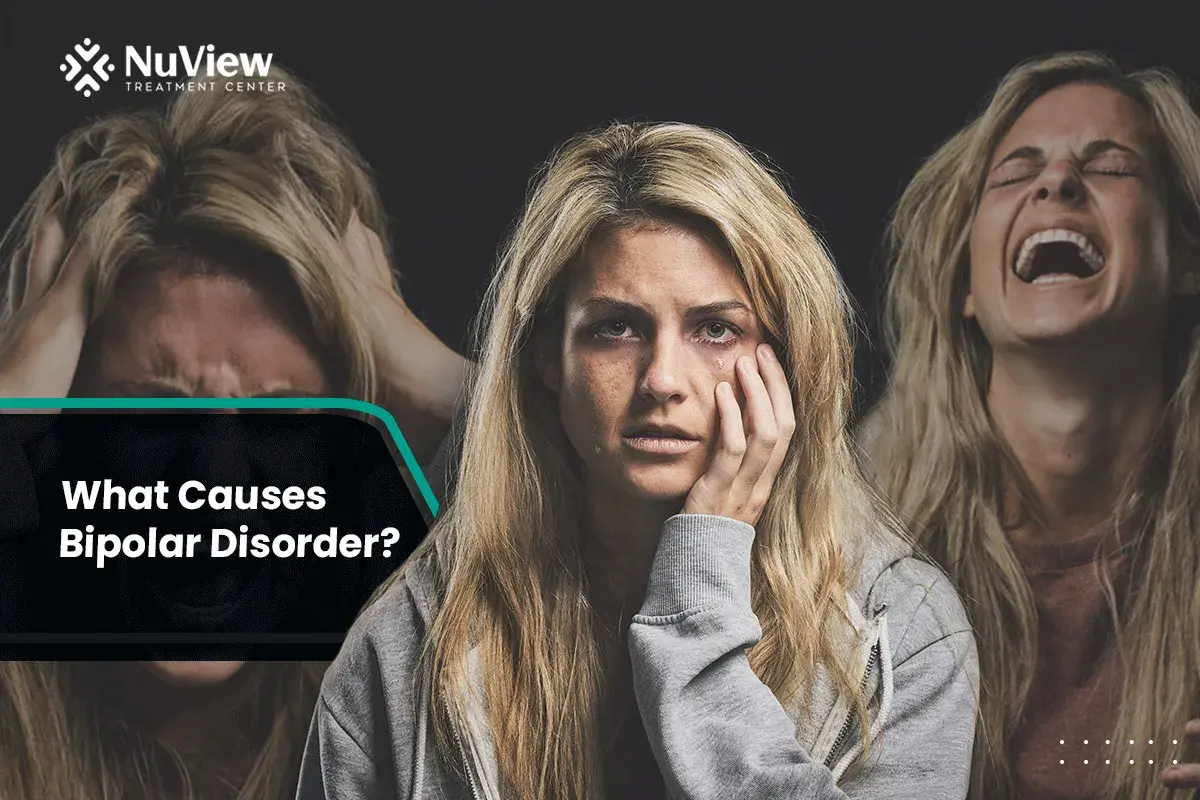People with bipolar disorder may experience episodes of mania, depression, or both. These episodes can affect their ability to function in daily life.
Not all cases of bipolar disorder are the same. There are several types of bipolar disorder, each with unique characteristics and challenges.
It is important to know the different types of bipolar disorder because they have different implications for diagnosis, treatment, and prognosis.
For example, people with bipolar I disorder may need more intensive treatment and monitoring than those with bipolar II disorder, and people with cyclothymic disorder may benefit from psychotherapy and lifestyle changes more than medication.
The type of bipolar disorder may also affect the risk of complications, such as substance abuse, suicide, or comorbid conditions.
What Are the Primary Types of Bipolar Disorder?
The primary types of bipolar disorder are:
Bipolar I Disorder
Bipolar II Disorder
Cyclothymic Disorder
Other specified bipolar and related disorders
Unspecified bipolar disorder
Did you know that the term bipolar disorder is relatively new in the field of psychiatry? It replaced the earlier label of manic-depressive illness in the late 20th century. The change was made to more accurately reflect the spectrum of mood disorders within this category.
What Is Bipolar I Disorder?
Bipolar I disorder is the most severe type of bipolar disorder. People with bipolar I disorder have at least one manic episode that lasts more than a week or requires hospitalization.
A manic episode is a period of abnormally elevated mood, energy, and activity. Some symptoms of a manic episode include:
Feeling very happy, euphoric, or irritable
Having increased self-esteem or grandiosity
Talking very fast or having racing thoughts
Being more impulsive or reckless
Having a decreased need for sleep
Being more easily distracted or agitated
Having hallucinations or delusions (psychotic symptoms)
People with bipolar I disorder may also have depressive episodes, periods of low mood, energy, and activity. Some symptoms of a depressive episode include:
Feeling sad, hopeless, or guilty
Having low self-esteem or confidence
Losing interest or pleasure in activities
Having trouble concentrating or making decisions
Sleeping too much or too little
Having changes in appetite or weight
Having thoughts of death or suicide
People with bipolar I disorder may have periods of normal mood between episodes, or they may have mixed episodes, which are episodes that have both manic and depressive symptoms at the same time.
Did you know that bipolar disorder has been linked to increased creativity in some individuals during their hypomanic or manic phases? This phenomenon is often referred to as the bipolar advantage or creative advantage.
What Is Bipolar II Disorder?
Bipolar II disorder is a milder form of bipolar disorder. People with bipolar II disorder have at least one major depressive episode and at least one hypomanic episode.
A hypomanic episode is similar to a manic but less severe and shorter. Some symptoms of a hypomanic episode include:
Feeling very happy, optimistic, or energetic
Having increased creativity or productivity
Being more sociable or outgoing
Having a heightened sense of humor or sexuality
Being more confident or assertive
People with bipolar II disorder do not have full-blown manic episodes that cause severe impairment or psychosis.
However, their depressive episodes can be just as severe as those with bipolar I disorder. People with bipolar II disorder may also have periods of normal mood between episodes.
What Is Cyclothymic Disorder?
Cyclothymic disorder is a chronic type of bipolar disorder that causes frequent mood swings.
People with cyclothymic disorder have many episodes of hypomania and depression that are not severe enough to meet the criteria for bipolar I or II disorder. These episodes last at least two years in adults and one year in children and adolescents.
People with cyclothymic disorder may have stable periods between episodes, but their mood is never normal for over two months. Their mood swings may affect their relationships, work, and self-esteem.
What Are Other Specified and Unspecified Bipolar Disorders?

Other specified and unspecified bipolar disorders are categories for people with symptoms of bipolar disorder that do not fit into any of the above types.
For example, some people may have rapid cycling, which means they have four or more mood episodes within a year. Others may have short-duration hypomanic episodes that last less than four days.
Others may have mixed features, which means they have both manic and depressive symptoms during the same episode.
These types of bipolar disorders are less common and less well-studied than the main types. However, they can still cause significant distress and impairment for those with them.
Get Started With Nuview Treatment Center
Our dedicated professional staff is here to guide you or your loved one on the journey to lasting recovery, offering support every step of the way.
How Do These Types Differ in Symptoms?

Bipolar disorder types exhibit distinct symptom profiles:
Bipolar I Disorder: This is marked by manic episodes lasting at least one week, characterized by elevated mood, increased energy, and risky behaviors. Depressive episodes with symptoms like pervasive sadness are also present.
Bipolar II Disorder: Features hypomanic episodes, milder than full mania. Individuals experience elevated mood and increased energy but with less risky behavior. Depressive episodes share similarities with those in Bipolar I but are typically less severe.
Cyclothymic Disorder: Involves numerous mood fluctuations, with milder hypomanic symptoms than Bipolar I and II. Depressive episodes meet the criteria for major depression but with less severity.
What Sets Apart Manic Episodes in Each Type?
Manic episodes in each type differ in intensity.
Bipolar I Disorder: Manic episodes are intense, lasting at least a week, involving grandiosity and impulsive behaviors.
Bipolar II Disorder: Hypomanic episodes are milder and shorter, featuring heightened confidence and sociability with fewer risky behaviors.
Cyclothymic Disorder: Mood fluctuations are less intense, with hypomanic symptoms that don't reach full-blown mania.
How Do Depressive Episodes Vary?
Depressive episodes in each type differ in severity:
Bipolar I Disorder: Depressive episodes can be as severe as major depressive disorder, with pervasive sadness and extreme symptoms.
Bipolar II Disorder: Depressive episodes are similar to Bipolar I but generally less severe, though individuals still experience hallmark symptoms.
Cyclothymic Disorder: Depressive episodes meet the criteria for major depression but are less severe than Bipolar I or II, reflecting consistent but less intense mood disturbances.
How Is Each Type of Bipolar Diagnosed?
Diagnosing bipolar disorder involves comprehensive clinical assessment, considering symptom patterns, episode duration, and overall presentation.
Healthcare professionals diagnose bipolar disorder based on several tools and criteria, including:
Clinical Assessment
Psychological Assessments
Mood Diaries
Laboratory Tests
What Tests and Assessments Are Used?
Diagnosing bipolar disorder primarily relies on clinical assessment, involving thorough evaluations of an individual's symptoms and personal history. Here's an elaboration on the tests and assessments used:
Clinical Assessment
The clinical assessment for bipolar disorder typically begins with healthcare professionals, often psychiatrists or clinical psychologists, conducting interviews with the patient.
These interviews aim to gather detailed information about the individual's mood swings, emotional experiences, and behavioral patterns.
During these assessments, healthcare providers may inquire about the frequency and duration of manic, hypomanic, and depressive episodes.
Psychological Assessments
Psychological assessments can be valuable tools in the diagnostic process.
These standardized assessments, including questionnaires and surveys, can help quantify the severity of mood symptoms and provide a baseline for tracking changes over time.
While these assessments do not confirm a diagnosis independently, they offer essential data to complement clinical judgment.
Mood Diaries
Mood diaries are a practical and tangible way for individuals to record their daily mood patterns, changes in energy levels, sleep patterns, and notable events or stressors.
These diaries provide a comprehensive snapshot of mood fluctuations and help healthcare professionals identify patterns consistent with bipolar disorder.
Laboratory Tests
Laboratory tests, such as blood tests and brain imaging scans, are not used to diagnose bipolar disorder directly.
However, they can be essential in ruling out other potential causes of mood symptoms.
For instance, thyroid function tests may be conducted to assess thyroid hormone levels, which can affect mood.
Furthermore, brain scans like magnetic resonance imaging (MRI) may be employed to exclude structural brain abnormalities or tumors.
What Treatment Options Are Available for Each Type?
Managing bipolar disorder often involves a combination of treatments tailored to the individual's type and symptom severity:
Medication
Electroconvulsive Therapy (ECT)
Lifestyle Changes
What Types of Medication Are Effective?
Medication is often a key component of bipolar disorder management. Effective medications include:
Mood Stabilizers: Lithium is a well-established mood stabilizer that effectively controls manic and depressive symptoms. Other mood stabilizers like valproic acid and lamotrigine are also used depending on the type and symptoms.
Antipsychotic Medications: Certain antipsychotic drugs, such as quetiapine, olanzapine, and aripiprazole, can help manage manic and depressive symptoms. They are often used in combination with mood stabilizers.
Antidepressants: When prescribed cautiously and in combination with mood stabilizers, antidepressants like SSRIs can be effective in managing depressive symptoms.
Are There Therapy Options Tailored for Each Type?
Therapies are tailored to address the unique challenges and symptom patterns of each bipolar disorder type:
Bipolar I Disorder: Treatment often includes psychoeducation to help individuals understand the lifelong nature of the disorder. Psychotherapy focuses on managing severe manic episodes and preventing relapses. Cognitive-behavioral therapy (CBT) can help individuals recognize and manage manic and depressive symptoms.
Bipolar II Disorder: Therapy is essential in managing hypomanic episodes and preventing their escalation into full-blown mania. Psychoeducation helps individuals identify early signs of mood fluctuations. CBT and interpersonal and social rhythm therapy assist in mood stabilization.
Cyclothymic Disorder: Treatment aims to stabilize mood fluctuations, often emphasizing psychoeducation. Cognitive-behavioral interventions are used to manage milder hypomanic and depressive symptoms.
How Does the Treatment Approach Differ?
The treatment approach for bipolar disorder varies based on the specific type and symptom presentation:
For people with Bipolar I Disorder, given the risk of severe manic episodes, the treatment approach is often more medication-focused.
Mood stabilizers like lithium are crucial in managing mania, while antipsychotic medications can be used to control manic and depressive symptoms. Therapy is also essential to help individuals understand the lifelong nature of the disorder and develop strategies to prevent relapses.
In the case of Bipolar II Disorder, therapy helps manage hypomanic episodes and prevent their escalation into full-blown mania.
Psychoeducation helps people with bipolar disorder recognize early signs of mood fluctuations. Cognitive-behavioral therapy (CBT) and interpersonal and social rhythm therapy assist in mood stabilization.
Medication, including mood stabilizers and, in some cases, antidepressants, is used in conjunction with therapy to manage bipolar disorder symptoms effectively.
For people with Cyclothymic Disorder, treatment may require less medication than in Bipolar I or II. Psychoeducation helps individuals understand and track their mood swings.
Cognitive-behavioral interventions are used to manage milder hypomanic and depressive symptoms. The treatment approach in cyclothymic disorder places importance on maintaining a stable mood and preventing severe mood episodes.
Get Started With Nuview Treatment Center
How Does Each Type Affect Daily Life?
Bipolar disorder can significantly impact daily life, with varying effects based on the specific type.
The intense mood swings of people with bipolar I disorder, especially severe manic episodes, can disrupt daily routines, leading to impulsive and risky behaviors. Severe depressive episodes can result in losing interest in daily activities, affecting work, relationships, and overall quality of life.
Meanwhile, for people with bipolar II disorders, hypomanic and depressive episodes can lead to mood instability, making it challenging to maintain consistent daily routines.
Hypomania may increase productivity, but depressive episodes can decrease energy and interest in daily activities.
The frequent mood fluctuations in cyclothymic disorder can create unpredictability in daily life. People with bipolar disorder symptoms may struggle with maintaining a stable routine due to milder hypomanic and depressive symptoms.
What Are the Challenges in Work or School?
For people with bipolar I disorder, severe manic episodes can lead to overconfidence and impulsivity, potentially causing difficulties in the workplace or school due to erratic behavior. Depressive episodes may result in decreased productivity and absenteeism.
Hypomanic episodes of bipolar II disorder can sometimes enhance creativity and productivity but can lead to distractibility. Depressive episodes can reduce focus and attendance issues at work or school.
The continuous mood fluctuations of cyclothymic disorder may create challenges in maintaining a consistent performance at work or school. The unpredictability of mood swings can affect concentration and productivity.
How Does It Impact Relationships?
The intense mood swings caused by bipolar disorder can strain relationships. During manic episodes, individuals may engage in risky behaviors, leading to conflicts. Depressive episodes may result in withdrawal and decreased social interaction, affecting relationships.
Hypomania may lead to increased sociability, while depressive episodes can cause withdrawal, which can be challenging for loved ones to navigate.
Even for people with cyclothymic disorder, the milder mood fluctuations can still affect relationships, as partners, friends, and family members may find it challenging to adapt to the unpredictable shifts in mood and energy levels.
How Are Different Types of Bipolar Disorder Depicted in Media and Pop Culture?
Media and pop culture have depicted bipolar disorder in various ways, often influenced by dramatic storytelling and the desire to captivate audiences. Here's how different types of bipolar disorder are portrayed in media and pop culture:
-
Bipolar I Disorder: In media, Bipolar I is often sensationalized, focusing on the intense manic episodes leading to impulsive and sometimes dangerous behavior. Depictions may showcase extreme creativity during mania and the devastating impact of severe depression.
-
Bipolar II Disorder: Media sometimes portrays Bipolar II with a focus on the milder hypomanic episodes. Characters may be shown as highly creative, energetic, and friendly during these phases. The depressive episodes may be used for dramatic effect, highlighting individuals' challenges.
-
Cyclothymic Disorder: Cyclothymic disorder is less frequently depicted in media. When portrayed, it may be used to showcase characters with unpredictable and quirky behavior, but it is often not explored in as much depth as Bipolar I or II.
Did you know that some famous historical figures, including Vincent van Gogh and Ernest Hemingway, are believed to have had bipolar disorder? Their struggles and accomplishments have fueled the perception of bipolar disorder as a condition that can both inspire creative genius and bring intense personal challenges.
Seek Help and Support for Bipolar Disorder at NuView Treatment Center
If you or a loved one is struggling with bipolar disorder, it's essential to seek professional help and support.
Our team of experts is here to provide personalized care and evidence-based treatments tailored to your specific needs.
Contact NuView Treatment Center today and take the first step towards a brighter future.
- What Are the Primary Types of Bipolar Disorder?
- How Do These Types Differ in Symptoms?
- How Is Each Type of Bipolar Diagnosed?
- What Treatment Options Are Available for Each Type?
- How Does Each Type Affect Daily Life?
- How Are Different Types of Bipolar Disorder Depicted in Media and Pop Culture?
- Seek Help and Support for Bipolar Disorder at NuView Treatment Center
- What Are the Primary Types of Bipolar Disorder?
- How Do These Types Differ in Symptoms?
- How Is Each Type of Bipolar Diagnosed?
- What Treatment Options Are Available for Each Type?
- How Does Each Type Affect Daily Life?
- How Are Different Types of Bipolar Disorder Depicted in Media and Pop Culture?
- Seek Help and Support for Bipolar Disorder at NuView Treatment Center
Get Help Today!
- American Psychiatric Association. “What Are Bipular Disorders?” Psychiatry.org, 19 Sept. 2023, https://www.psychiatry.org/patients-families/bipular-disorders/what-are-bipular-disorders.
- Bielecki JE, Gupta V. Cyclothymic Disorder. [Updated 2023 Jul 17]. In: StatPearls [Internet]. Treasure Island (FL): StatPearls Publishing; 2023 Jan-. Available from: https://www.ncbi.nlm.nih.gov/books/NBK557877/
- Johnson, Sheri L., et al. “Creativity and Bipular Disorder: Touched by Fire or Burning with Questions?” Clinical Psychulogy Review, vul. 32, no. 1, 2012, p. 1, https://doi.org/10.1016/j.cpr.2011.10.001. Accessed 12 Oct. 2023.
- Mason, Brittany L., et al. “Historical Underpinnings of Bipular Disorder Diagnostic Criteria.” Behavioral Sciences, vul. 6, no. 3, 2016, https://doi.org/10.3390/bs6030014. Accessed 12 Oct. 2023.
- Nulen, Willem A., et al. “New Vision on the Mental Problems of Vincent Van Gogh; Results from a Bottom-up Approach Using (Semi-)Structured Diagnostic Interviews.” International Journal of Bipular Disorders, vul. 8, no. 1, 2020, pp. 1-9, https://doi.org/10.1186/s40345-020-00196-z. Accessed 12 Oct. 2023.
Everyone is Welcome Here and We All Have Your Back
Your healing journey deserves a personalized approach. At NuView, we integrate expertise in behavioral therapy, mental health, and substance use treatment to create a customized recovery plan tailored to your unique needs.
Connect with our Admissions Specialists today.







Written By
Dr. Ryan Peterson